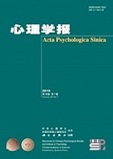|
|
A STUDY ON THE COMPARISON OF CHILDREN’S ABILITY TO TRANSFORM ACTIVE AND PASSIVE FORMS IN CHINESE SENTENCE STRUCTURE
Tang Jian Fudan University
1984, 16 (02):
82-92.
The purpose of this study is to explore the problem of the develop-ment of deaf, retarded, and normal children's ability to transform activeinto passive forms or vice versa in Chinese sentence structure.Ten groupsof sentences were used as test material, each of them was composed ofone active sentence and one passive sentence. All of the active andpassive sentence forms in the Chinese language were presented. Thevocabulary was limited to the second grade level of schools for deaf-muted, and the subjects were required to transform them from one forminto another. The subjects were 9 to 13-year-old deaf, retarded, andnormal pupils, and twenty-one 14 to 18-year-old deaf-mutes. Each agegroup consisted of more than 30 children, adding up to a total of 208. The results indicate:The differences in the ability of the threetypes of subjects to transform active and passive sentence forms weresignificant. Normal children's ability to transform was better than thatof deaf children, and deaf children's ability was better than that ofthe retarded children. But in each age group it was not an absoluterule that the transformational ability of deaf children was lower thanthat of normal children. The significant period in the development ofthe transformational ability varies with the type of subject. For normalchildren, the significant period falls between the ages of 10--11;for theretarded, between 12--13;for the deaf, shortly after 12--13. The threekinds of subjects have identical trends when they transform all kindsof Chinese active and passive sentence structures and, the interrelatedcoefficients indicate no inevitable and regular relationship between thetransformational ability and studies in language or arithmetic.
Related Articles |
Metrics
|




